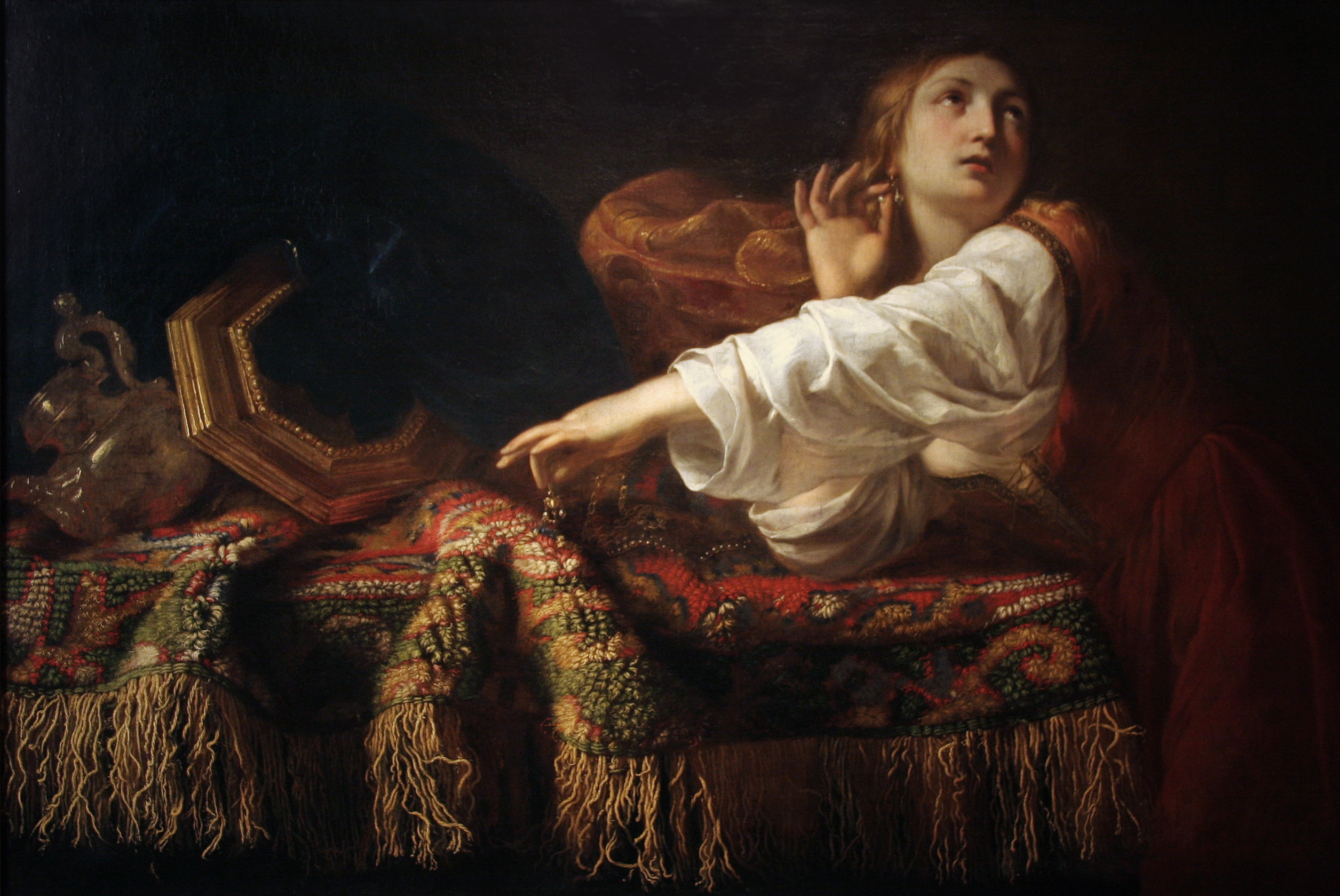Religion : Young Woman at a Mirror
Meiffren Conte’s Young Woman at a Mirror is from the last half of the seventeenth century. The problem that arises in an analysis of the painting is what exactly that young woman and the mirror in the painting are supposed to represent. Various interpretations include the proposition that the painting is to be deciphered from a secular lens, and the woman is supposed to represent vanity. An alternative interpretation suggests that the painting shows Mary Magdalene repenting and casting aside her jewels. The symbols in the painting reinforce the Mary Magdalene argument instead of solely being proof for the secular argument. Young Woman at Mirror depicts Mary Magdalene.
There is a great deal of dispute over the exact details of Mary Magdalene’s story. However, in any account it is clear that she had some sort of large role both biblically and in Christianity itself. The most often recounted story suggests that Mary Magdalene was a rich and noble lady who lived on the Sea of Galilee. Her brother and sister were said to be Martha and Lazarus, who were also biblical characters, and who both lived virtuous lives. Mary, on the other hand, reputedly lived a life of vanity and greed until she was converted by Jesus Christ. Other stories in the Bible suggest that she was one of the people watching at Jesus’s Crucifixion, one of the disciples that discovered his empty tomb, and even that she was a prostitute who was redeemed because of Christ. Most sources seem to agree that Magdalene was one of Jesus’s favorite and most important disciples. The idea of Mary Magdalene as a prostitute seems to be a relatively modern construction, and many scholars do not agree with that identification. However, there is still relatively little known about Magdalene. She is mentioned thirteen times in the New Testament of the Bible, and in the Gospels of Mark and John she is said to be the only person that first sees Jesus after his resurrection.

